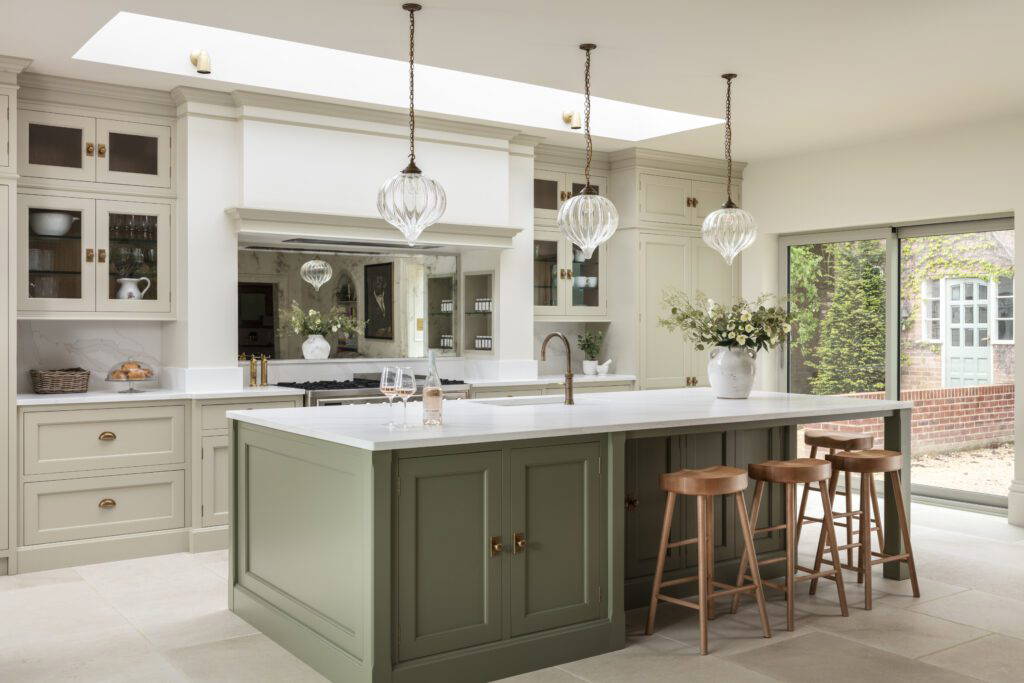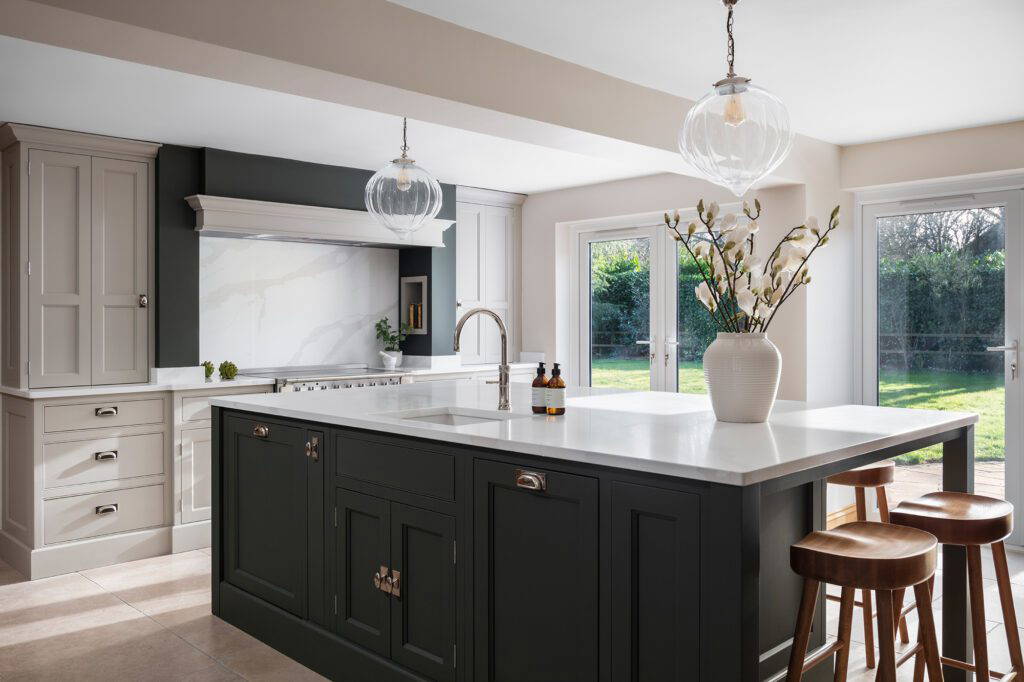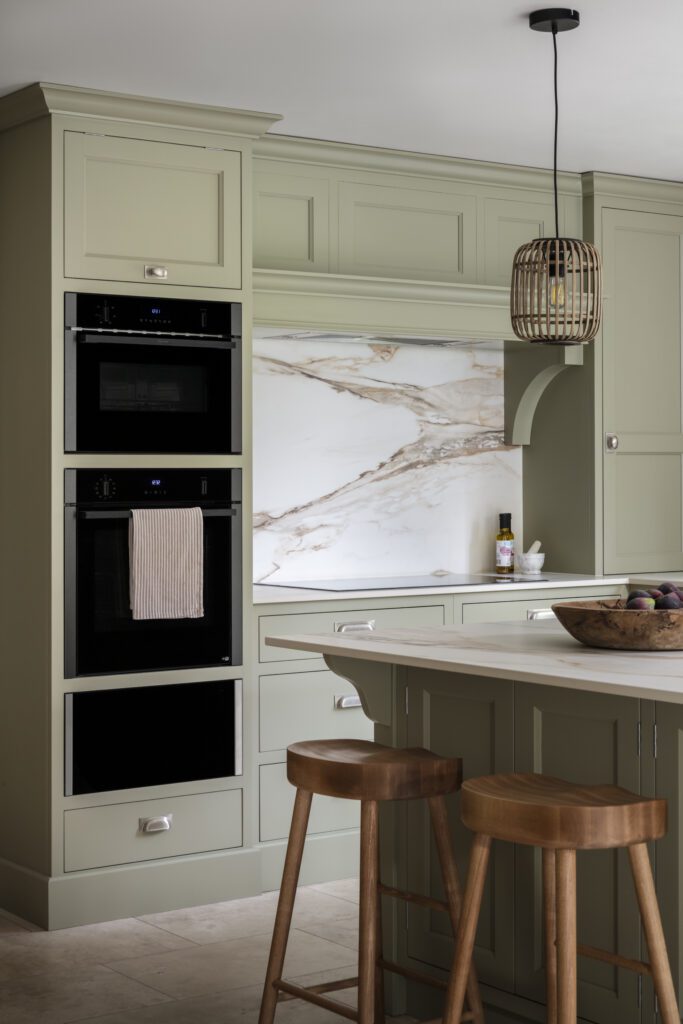Are you looking to bring a bit of vintage charm to your kitchen design? Georgian and Victorian kitchens were filled with beautiful design elements that can be brought into the modern home. But what’s the difference between these two styles? Understanding the interior fashion of the time can help you pinpoint which features you want to incorporate into your dream handmade kitchen. Read on to discover the differences between Georgian and Victorian kitchens.
Georgian style
The Georgian era refers to the reigns of Kings George I to IV, which spanned from 1714 to 1830. Georgian architecture is known for its symmetrical designs, grandeur and elegance, and is characterised by ornate plasterwork, large windows, and tall ceilings.
Symmetry
Georgian kitchens are often designed with a symmetrical layout, with a central island and matching cabinets on either side. This creates a balanced and harmonious look that is sure to bring a positive sense of consistency to your kitchen space.
Ornate details
Georgian kitchens are known for their intricate plasterwork and cornicing, which adds a touch of grandeur to the space. Maximalism is not for everyone, but a little bit of intricate detail here and there can infuse a gentle air of luxury into any kitchen design.
Classic colours
Georgian kitchens often use classic colours such as cream, white, and grey, which create a timeless and elegant look. Minimalist colours also create the perfect backdrop to work from, so you can get creative with statement appliances or features.
Natural materials
Georgian kitchens often incorporate natural materials such as wood and stone to add warmth and texture to the space. These are ideal if you want to create a cosy, rustic aesthetic.
Victorian style
The Victorian era followed the Georgian. During Queen Victoria’s time on the throne, from 1837 to 1901, interior design became more ornate and eclectic. Victorian architecture is characterised by bold colours, patterns, and textures, and is often associated with the Arts and Crafts movement.
Decorative
Victorian kitchens are known for their decorative mouldings, intricate tile work, and ornate cabinetry. These details add a touch of opulence to the space. Whilst too much decoration can often overpower a space, a tasteful Victorian kitchen design can accentuate details without overpowering your kitchen space.
Bold colours
Victorian kitchens often feature bold colours such as deep reds, blues, and greens, which create a dramatic and striking look. The Victorians believed that rich colours were associated with prosperity and status. A Victorian kitchen design is a definitive way to emulate a sense of luxury in your own home.
Mixed materials
Victorian kitchens often incorporate a mix of materials such as wood, metal, and stone to create a layered and eclectic look. Combined materials add depth and texture to a kitchen, making the space even more interesting.
Artistic touches
Victorian kitchens often feature artistic touches such as stained glass windows and intricate tile work, which showcase the craftsmanship of the era within a contemporary design. Adding a creative flair to your kitchen design can add a touch of sophistication to an otherwise bland kitchen design.
Tailored handmade kitchen design with Hill Farm Furniture
Regardless of which style you choose, a handmade kitchen is a great way to add a personal touch to your home. A handmade kitchen is designed and crafted specifically for you, with every detail customised to meet your unique needs and style preferences.
At Hill Farm Furniture, we can help you incorporate traditional, period, and contemporary design elements into your home. Whether you’re looking for a sleek minimalist kitchen or one brimming with Victorian charm, our expert team can create a space you’ll love.
We know that the kitchen is the heart of your home, which is why we take pride in our meticulous attention to detail and use only the finest quality materials — from initial designs to finishing touches. Feel free to get in touch to discuss the kitchen design you have in mind.


